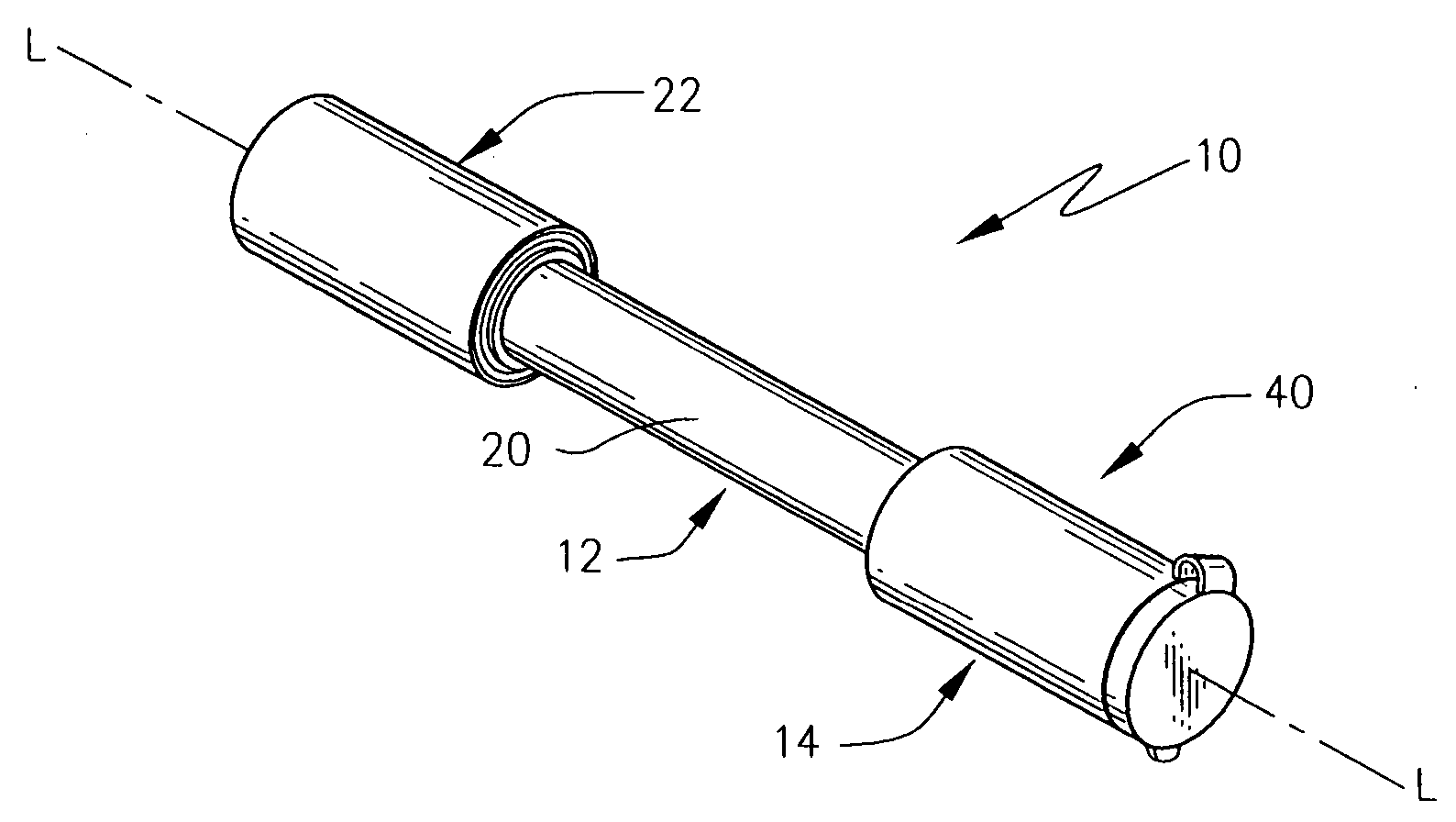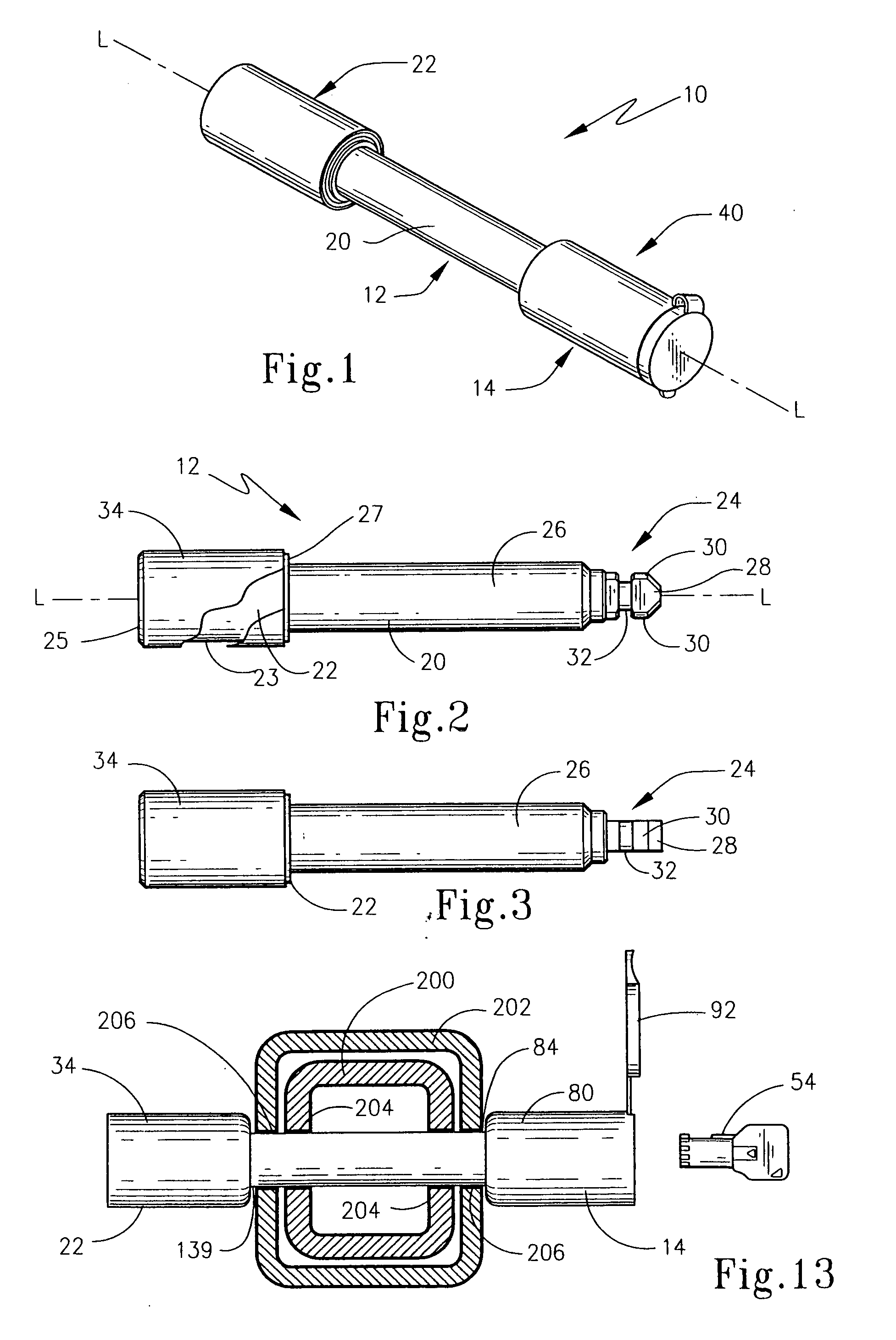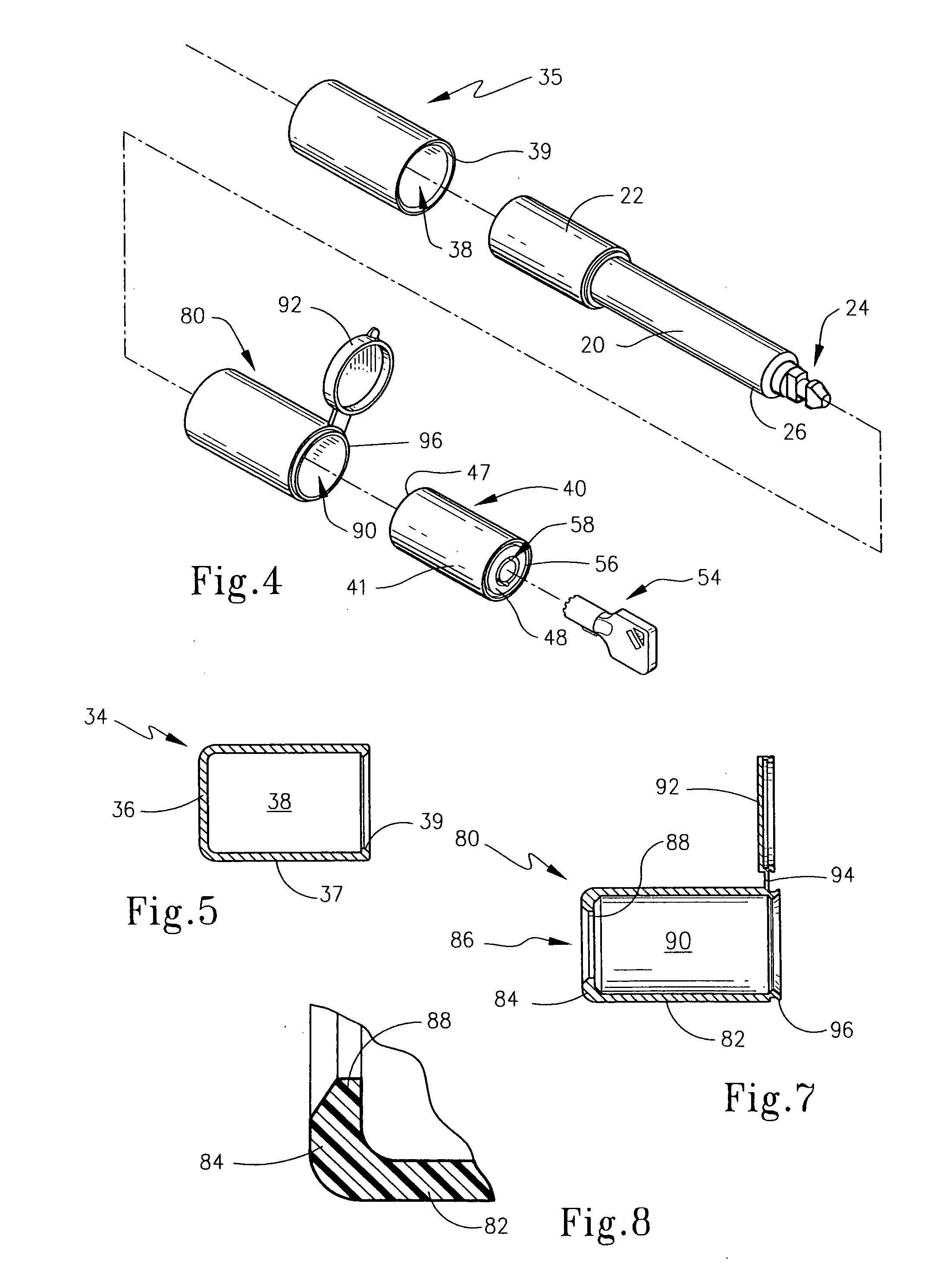Locking device having flange seal
a technology of locking device and flange seal, which is applied in the direction of padlocks, towing devices, building locks, etc., can solve the problems of prone to false locking, easy to fall off the locking head during use, and disadvantageous use, and achieves convenient sealing and simple construction.
- Summary
- Abstract
- Description
- Claims
- Application Information
AI Technical Summary
Benefits of technology
Problems solved by technology
Method used
Image
Examples
Embodiment Construction
[0032] The present invention is broadly directed to a locking device that is adapted to secure objects together. This device is particularly constructed so as to provide a seal between the locking head and a shank portion of the shackle. While the present invention may be employed with a variety of locking devices, it particularly concerns a locking device in the form of a pin type-locking device that is used to secure two objects together and is specifically depicted as a hitch pin that may be used to secure a hitch receiver to a hitch bar as is the common practice in towing applications. Moreover, while the present invention is described with respect to a key operable locking device, it should be understood that the invention is not limited to key operable locking devices, but the inventive concepts herein may be employed with combination-type locking mechanisms.
[0033] For illustrative purposes, the present invention is described for a locking device employing a locking mechanism...
PUM
 Login to View More
Login to View More Abstract
Description
Claims
Application Information
 Login to View More
Login to View More - R&D
- Intellectual Property
- Life Sciences
- Materials
- Tech Scout
- Unparalleled Data Quality
- Higher Quality Content
- 60% Fewer Hallucinations
Browse by: Latest US Patents, China's latest patents, Technical Efficacy Thesaurus, Application Domain, Technology Topic, Popular Technical Reports.
© 2025 PatSnap. All rights reserved.Legal|Privacy policy|Modern Slavery Act Transparency Statement|Sitemap|About US| Contact US: help@patsnap.com



